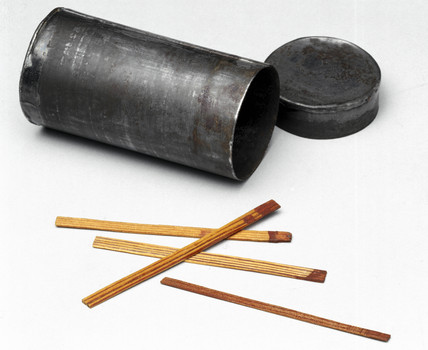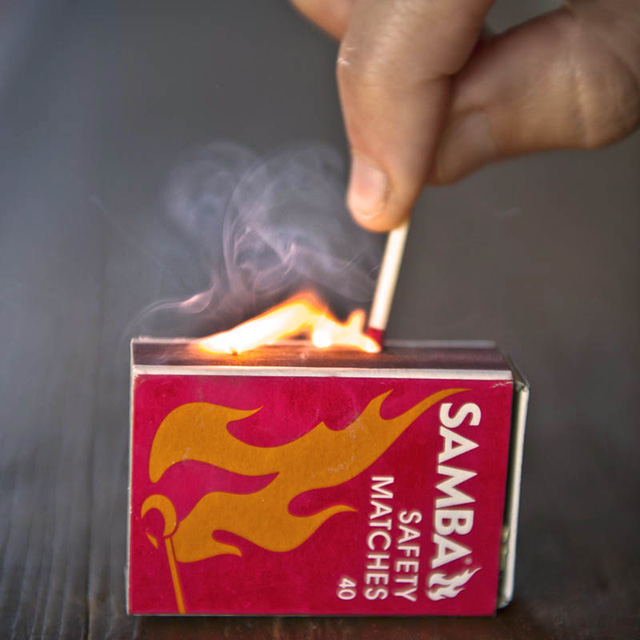November 27, 1826 - Match matches are officially born
John Walker refused to register his patent, but instead preferred to pursue his scientific studies.
November 27, 1826 - John Walker invents matches
John Walker (May 29, 1781 - May 1, 1859) was an English chemist, who happened to invent matches on November 27, 1826 by mixing potassium potassium with antimony sulfide. . The first sale from his store was recorded as April 7, 2727 under the name ' friction lights '. He refused to register his patent, preferring to pursue his scientific studies instead. He did not reveal the exact composition of his matches.

Before that, a lot of matches had appeared as in 1681 an Englishman named Robert Boie had dipped the stick soaked in sulfur into sulfur and phosphorus and so the first matches were born even though they were It burns so fast that its use efficiency is not high. Walker tried to find a way to help people create a fire from their own hands, although at that time gunpowder was born but they always created intense flames while leaving Easy to use, the flame needs to burn slowly and do not explode.
In one experiment with potassium chloride and antimony sulfide, he accidentally discovered that the mixture of these two substances would burn when there was a sufficient friction force. Immediately, Walker thought about how to split this magic mixture into many times. He grabbed the toothpicks from the lab desk and turned into small balls and plugged the toothpick through them. The first matches were born like that although Walker himself admitted that they were too ugly. Later, Walker studied and changed the chemical composition of matches by adding sulfur with glue. In addition, he also changed the shape of matches by replacing toothpicks with smaller, more sturdy wooden slices when used. To serve the ignition, Walker also added each tin box with a piece of sandpaper sprinkled with a layer of glass powder.

Although he was encouraged to patent patent by physicist Michael Faraday , John Walker still refused because he thought that what he really was a passion for science and he did not need any papers to prove it. John Walker himself had a local reputation as a botanist, and he expressed concern for mineralogy research, and spent much time performing chemical experiments. Walker never married and lived with his nephew.
In 1833, phosphorus-coated matches were born in Austria and Germany, but a problem arose because white phosphorus and gold were toxic to workers producing matches, so in 1906 production was banned. all around the world. Finally, a non-toxic red phosphorus was found to produce safer matches. The first safe matches were produced in Switzerland in 1844. Now instead of covering the matchstick with all the necessary chemicals, today people put red phosphorus on the surface of the box and I just need to swipe the match.
- Water: Something you never expected could burn a match
- Image beams use matches to turn into animals
- The brilliant inventions of mankind
- Set of 5 matches to move the match to make you scratch your hair
- You will be a genius if you find all the answers to this puzzle
- November 18: Begin the end of the 2006 Vietnam Talent Contest
- The magic tricks of the virtual match control turned out to be the physical lesson learned at school
- Video: The burning process of matchsticks
- How do people calculate the ratio, correct breakdown, the percentage holding the ball in each game?
- Because where is Vo Tac Thien tru, both of them are the middle-minded one, please help her?
- 29 tips from hundreds of years ago but still useful in modern life (Part 1)
- Alcatel officially merged with Lucent
 Biography of hero Vu A Dinh
Biography of hero Vu A Dinh History of hematology
History of hematology Who is Mr. Tam Da 'Phuc-Loc-Tho' and what does it mean?
Who is Mr. Tam Da 'Phuc-Loc-Tho' and what does it mean? Unbelievable facts about the history of the oil and gas industry: Gasoline used to be cheaper than water, so abundant that it had to be dumped into the river...
Unbelievable facts about the history of the oil and gas industry: Gasoline used to be cheaper than water, so abundant that it had to be dumped into the river...